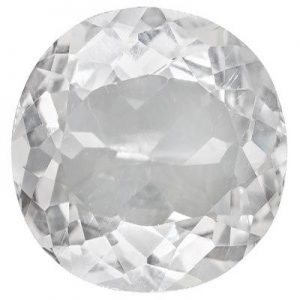Tenebrescent Gems
Photochromism is a process that can be described as a change of color upon exposure to light. A mineral that possesses this property is said to be photochromic. The phenomenon was discovered in the late 1880s, including work by Markwald, who studied the reversible change of color of tetrachloronaphthalen. He labeled this phenomenon “phototropy”, and this name was used until the 1950s when Yehuda Hirshberg, of the Weizmann Institute of Science in Israel, proposed the term “photochromism”. Technically, photochromism is defined as “the reversible transformation of a chemical species between two forms by the absorption of electromagnetic radiation, where the two forms have different absorption spectra.” But the term has been loosely adopted in mineralogical circles to mean the reversible change of color of a mineral upon exposure to a particular type of light.
The term “tenebrescence” also means the reversible change of color of a mineral upon exposure to a particular type of light. Tenebresence is from the Latin “tenebrae” for shadows. Tenebrescence refers to a reversible color change in which certain minerals darken or change color in response to radiation of one wavelength and lighten or change back to their original color upon exposure to a different wavelength. These changes usually take effect with exposure to Shortwave UV, Longwave UV and sunlight.
It seems the term tenebrescence is being replaced by photochromism. Whether you call a mineral tenebrescent or photochromic, they both roughly mean the same thing. This effect can be repeated indefinitely, but is destroyed by heating. Tenebrescent minerals include the Hackmanite variety of Sodalite, some Scapolites and Tugtupite.
White Hackmanite, from a few sources, may turn raspberry red after exposure to shortwave UV light and the color fades rapidly in sunlight. A recent find of colorless Scapolite from Badakhshan, Afghanistan changes to a saturated, medium blue when exposed to shortwave UV light. When the shortwave UV light is removed the stones immediately begin to fade and return to colorless within a few minutes. Tugtupite will darken in color from from light pink to deep rose red when exposed to shortwave UV light and fade back to light pink when removed from the UV light.
Other minerals may change color or lose color when exposed to certain types of light but the change is permanent. These minerals may also be called “photochromic” by some. Joel Arem, in the Color Encyclopedia of Gemstones, describes Proustite as a photochromic gem because it can permanently turn dark or even black with prolonged exposure to light. This is also true of Pyrargyrite. Both minerals suffer from this effect because of their silver content. Silver was used in early photographic processing for this reason.
In Kunzite, the pink variety of Spodumene, the pink color may fade with prolonged exposure to light. This has earned Kunzite the nickname of the “evening stone” since wearing it during daylight hours is not recommended. Maybe these minerals should be termed “irreversible” photochromic minerals – but that would be an oxymoron since “photochromic is defined as “reversible”.


